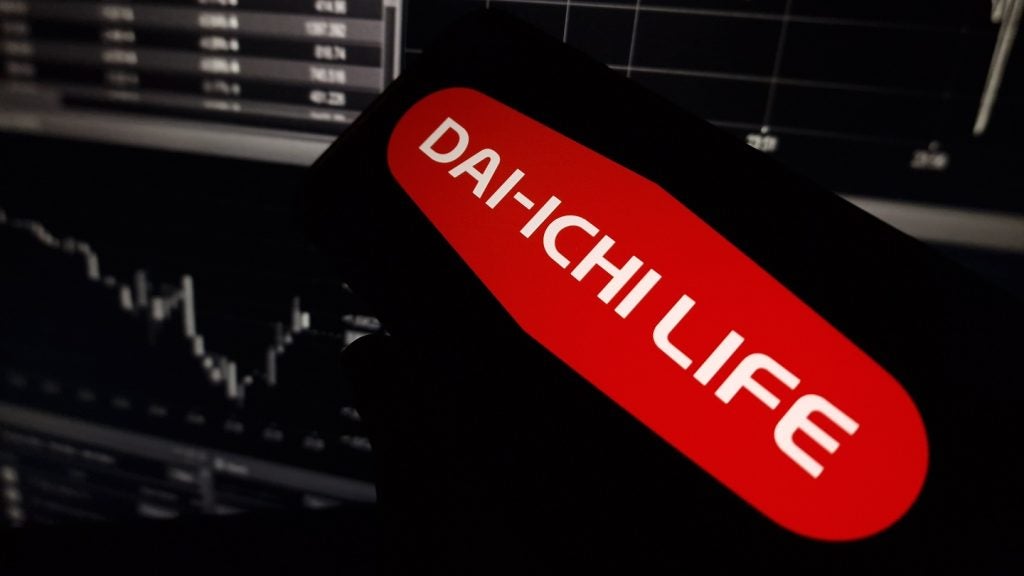
The Lebensversicherungsreformgesetz (Life Insurance Reform Act) went through the legislative process with uncharacteristic haste, possibly sped up by politicians keener to watch the semi-finals and the finals than discuss its possible impact in detail.
Despite the Normenkontrollrat (National Regulatory Control Council), an independent advisory body aiming to ensure better regulation, stating that it didn’t have enough time to examine the 35-page document in depth, the act moved on to the desk of German President Joachim Gauck. Originally expected to sit there for up to two months, it was signed into law in about two weeks.
With the act now published in the Bundesgesetzblatt (federal law gazette), some of the amendments came into effect on 7 August 2014, others will follow on 1 January 2015. Overall, the changes will apply to 62 million of the approximately 88 million life and pension policies, though unit-linked and term assurances are not affected.
Tug-of-war
Germany’s governing coalition had written an effort to reform life insurance into its coalition agreement of November 2013. As it stands, however, the act also represents the latest act in a tug-of-war between consumer groups and industry groups.
One flash point is the participation in valuation reserves. In the past, valuation reserves had been allowed to be accumulated – instead of being distributed – and thereby used to stabilize the annual return for policyholders.
How well do you really know your competitors?
Access the most comprehensive Company Profiles on the market, powered by GlobalData. Save hours of research. Gain competitive edge.

Thank you!
Your download email will arrive shortly
Not ready to buy yet? Download a free sample
We are confident about the unique quality of our Company Profiles. However, we want you to make the most beneficial decision for your business, so we offer a free sample that you can download by submitting the below form
By GlobalDataThe consumer watchdog Bund der Versicherten (BdV) then lobbied for the payout of valuation reserves, and the Bundesverfassungsgericht, Germany’s supreme court, ruled in 2005 in favour of the consumer body, stating that consumers "have to participate in valuation reserves in an appropriate form".
This became law in 2008, which meant that insurers were legally obliged to pay out half of their valuation reserves to policyholders whose contracts expired or had been terminated. They had to take into account not only valuation reserves on equities and real estate but also those on fixed income securities.
In November 2012, the insurance industry then pushed for a reform, but met stiff resistance. "At that time, we managed to stop the act thanks to the strong reaction from the media and the public, so that even a party gathering of the CDU [the conservative party] stated that this reduction of benefits shouldn’t happen," says Axel Kleinlein, chairman and spokesman of the Bund der Versicherten.
However, industry groups remained dissatisfied with the change. According to a spokesman of the industry group Gesamtverband der Deutschen Versicherungswirtschaft (GDV): "The decision was made without considering the basic differences between the character of increasing share prices and the regular return of fixed income securities.
"Since the very early stage of the discussion in 2005 the GDV has been pointing out that this construction will cause serious problems during long periods of low interest rates, as meanwhile, due to extremely low interest rates, the value of fixed income securities has ballooned."
He added, "We have criticized the current regulation since its instalment in 2008 and have demanded changes especially for the regulation of valuation reserves on fixed income securities.
"As a matter of fact, the booming stock markets in the late 1990s had been the main motivation behind the reform. But equities are not the biggest asset in life insurers’ portfolios, seldom exceeding about 10%. Obviously the regulation did not fit well into life insurers’ asset allocation, thus the GDV – accompanied and supported by many other experts – insisted on correcting this regulation."
Roll-back
The current Life Insurance Reform Act now represents a partial roll-back of the last reform. Participation in valuation reserves on fixed income securities will now be limited. Insurers will pay leaving policy holders only the reserve amount that is not deemed needed to ensure that guarantee obligations can be met in the future. Leavers will still benefit from half the valuation reserves held in equities and real estate.
"[Even after the change in 2008], the life insurers never paid even one cent more to the consumers than before, because they managed to pay the participation of the hidden values with a bit of a trick," says Kleinlein. "Normally at the end of the contract, you get most of the benefits, the surplus participation. Since 2008, the insurers have reduced this, relabeling the surplus participation as participation in valuation reserves. Now they want to reduce these, which means that consumers will now get less than they used to get in 2007 or earlier."
But was it necessary?
Kleinlein attributes the speed with which the Act progressed to smart tactical timing: "This time they were much smarter and pushed this agenda at the exact same time as the Football World Cup was happening, hiding the Act and the whole process behind the distraction of the event. Important steps were taken on the same days as major football games were held."
Kleinlein also criticises the haste with which the Act progressed: "Consumer groups and other experts had only 1.5 days to comment on the draft. "That was definitely deliberately done. It’s very unusual that other institutions and even some ministries only had 1.5 days to comment on the Act. Normally that would take 5-7 weeks. Even the German federal states only had one week to discuss the Act – normally that would be expected to be three weeks. The Normenkontrollrat said it was impossible to ensure that the Act isn’t in conflict with the constitution and other laws in such short a time and requested more time to examine it, but this wasn’t granted."
One of the drivers behind this extraordinary speed was the argument that it was important to get the Act signed into law immediately, as the Bundesbank (federal bank) stated that some German insurers might run into trouble by 2023.
Rumblings in the German mainstream press suggested that the next financial crisis might lurk in the insurance sector, and the Act looks like a tool designed to protect an industry from a crisis that still needs to continue unabated for another nine years to cause serious damage.
"The assessment of the Federal Bank was that some insurers might run into trouble in 2023, but this is 15 years after the start of the crisis. Their model assumes that low interest rates continue, and that there will be no reaction of insurers and no attempt made to use the tools at their disposal to reduce the problem. In short, you’re seeing a sector that’s strong enough to withstand 15 years of crisis and low interest rates. This is not a weak part of the financial industry, this is a strong part of it," Kleinlein states emphatically.
Kleinlein attributes the federal bank’s assessment to a failure to understand how life insurance companies’ business models differ from that of ordinary companies: "A German life insurer holds up to 80% of its profitability requirements in special reserves (beyond the hidden reserves), which continue to earn interest even in a low interest environment. Therefore it’s not that difficult for life insurers to earn enough to fulfil their obligations, as these reserves provide a substantial buffer. So the analysis of the Federal Bank is wrong in that regard. Yes, if you only look only at interest rates in the world markets, you could get the idea that German life insurers might get into trouble because of guarantees they have given in former times, but German insurers have these reserves that they have and can use and use very well, so the whole problem diminishes substantially."
The few versus the many
Another bone of contention was that the interests of leaving policy holders had to be weighed against the interests of those who remained.
The GDV states that this reduction in payout will only affect a minority of policy holders: "As a result of the extremely low interest rates, the value of fixed income securities has ballooned, and life insurance companies were forced to pay more and more money to the small group of leaving policyholders instead of keeping it for the remaining ones – representing 95% of policyholders."
However, Kleinlein calls this a "gross distortion" and claims the number is deliberately misleading: "The figure of 5% leavers doesn’t refer to 5% leavers over the lifetime of an average policy, but rather 5% leavers per year. It’s the rule rather than the exception in the German life Insurance sector to leave before the policy comes due. Only about a third of all people who have life insurance as a pension provision keep the policy to maturity."
The overall impact on consumers is substantial. The BdV estimates that holders of policies that end in 2014 or shortly thereafter will see their payout reduced by 5-10%, "up to 15% in some cases," says Kleinlein.
Higher surplus participation
From 2015, policyholders’ minimum participation in the so-called risk surpluses rises from currently 75% to 90%. This applies to both existing and new customers. Risk surpluses are one of the three sources of surplus participation characteristic for life insurance in Germany; the others being cost surpluses and investment income. Risk surpluses are generated when lower levels of risk are held than had been calculated.
"This merely changes things back to how they were until 2008," explains Kleinlein. "According to our calculations based on last year’s numbers, this represents a gain of EUR800 million for consumers – but it’s still dwarfed by the EUR3billion consumers lose thanks to the changed participation in the hidden reserves."
One victim: transparency
An earlier draft of the Act included the key point of making commissions paid to distributors for the sale of insurance products more transparent.
However, this provision was struck out, and the wording now says that the "reduction in yield" has to be revealed to the consumer.
The GDV hailed the Act as more transparent, with its President Alexander Erdland stating: "We also support the moves to make life insurance costs more transparent. A simple indicator will allow our customers to tell what effect costs will have on their policy return. And they will now be able to compare actual costs in a realistic manner."
However, Kleinlein is wholly unimpressed: "This ‘reduction in yield’ is a mathematical construction to compute how much the interest rate of the contract is reduced by the different costs associated with it. Because computing this is very difficult and complex, it’s also a number that can be manipulated very easily. If you’re a mathematician, you can find ways to make a contract appear very cheap when it’s actually very expensive compared to a much cheaper one."
As the financial crises have shown, most consumers do not have the level of financial literacy to make informed decisions on financial products. To protect them from bad advice and mis-selling is a key motivation behind the guidelines of regulators such as EIOPA on the European level and BaFin on the national level.
Kleinlein agrees: "Hardly anybody will understand what they are signing – not even politicians have the kind of financial literacy to understand what it’s all about."
While contracts in other countries (such as the UK) include the amount the distributor or sales agent is paid, this is not yet the case in Germany. That the wording was struck from the Act was actually hailed as a victory by associations of distributors and intermediaries in Germany.
Kleinlein finds this attitude short-sighed: "If it was a victory, it’s temporary at best. If you look at EIOPA, there is no discussion about whether the commissions shall be revealed, but only how they shall be revealed."
In fact, EIOPA has just closed a questionnaire it sent to different consumer protection agencies to ask them how commissions should be revealed and what the best way to reveal them is.
Above all, though, Kleinlein sees this as a wasted opportunity: "This would have been a chance for Germany to provide a blueprint how to do it, so Brussels doesn’t end up doing something that doesn’t fit into the German landscape. But this chance was wasted as the industry in Germany refused to come up with a national solution and rather opted to wait for the one that Brussels will impose from the top."
With the lessons of the financial crises still fresh and regulatory trends moving towards protecting consumers from mis-selling of financial products, it is expected that EIOPA will enforce guidelines towards stricter transparency in the next two years.
The Life Insurance Reform Act – some changes:
Reduced participation in valuation reserves
Under the Life Insurance Reform Act, participation in valuation reserves on fixed income securities are now limited. Insurance companies are now only obligated to pay leaving policyholders the reserve amount that is not needed to ensure that guarantee obligations can be met in the future. Leaving policyholders continue to participate without restriction in half the valuation reserve amount held in equities and real estate.
Lower maximum guaranteed interest rate
The maximum guaranteed interest rate that German insurers can offer will reduce from 1 January 2015 from currently 1.75% to 1.25%. This level of interest must be applied to capital accumulated within classic life and pension policies and remains constant throughout the entire term. The reduction will only apply to policies taken out from 2015 onwards. All existing policies will continue to benefit from the guarantee.
In addition, policyholders participate in investment, risk and cost surpluses that increase the contractually guaranteed sum. However, these surpluses cannot be predicted at the start of a policy, although the GDV states that the overall rate of return on life policies currently stands at approximately 4%.
Higher surplus participation
As from 2015 policyholders’ minimum participation in the so-called risk surpluses will rise from currently 75% to 90%. This will apply to both existing and new customers. Risk surpluses are one of the three sources of surplus participation that is characteristic for life insurance in Germany; the others being cost surpluses and investment income. Risk surpluses are generated when lower levels of risk are held than had been calculated – for example, if term assurance policyholders live longer than had been assumed.
Distribution block on dividends
To ensure that life insurers can meet their obligations even during long periods of low interest rates, legislators have blocked them from distributing dividends so that resources cannot be diverted to shareholders that might be required to fulfil guarantees in the future. This change came into immediate effect.
However, these rules do not apply to companies that belong to a parent with which they have agreed a profit/loss transfer – these can still distribute their profits, provided the parent covers the subsidiary’s losses.
Lower maximum zillmerisation rate
The maximum zillmerisation rate for life insurance policies will be cut from 4.0% to 2.5% from 2015. This means that, during the first five years of a policy, companies will only be able to financially account for acquisition costs equivalent to 2.5% or less of the life policy’s premium amount. The government believes this will produce higher surrender values and will create a downward pressure on acquisition costs.
Introduction of a yield indicator
With effect from 1 January 2015 all life insurance policies must contain key indicators regarding the impact of management costs; this brings them in line with the state-subsidised Riester policies (expected to apply from 2016). The reduction in yield rate will indicate the effect of costs on a policy’s returns. The indicator will include all built-in costs, taking into account acquisition costs as well as ongoing expenses. For unit-linked products, fund costs will also be included.







